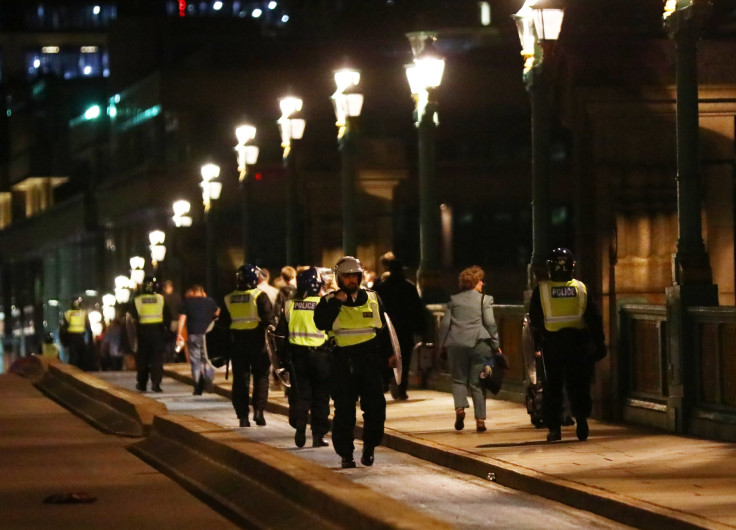London Bridge Terror Attack: Why Vehicles Are Becoming Common Weapons

Suspected terrorists mowed down pedestrians with a van Saturday night in the capital of the United Kingdom, before stabbing people on London Bridge. The attack killed seven people and wounded over 30.
Three suspects were shot dead in the Borough Market area near the bridge and the injured victims were treated across hospitals in London.
Read: Terror Network Arrest: Student Pilot Detained In Manchester Bombing
The Metropolitan Police called the attacks “terrorist incidents.” Prime Minister Theresa May also confirmed the attack “is being treated as a potential act of terrorism.” No terror group has claimed responsibility for the attack yet.
The attack bore similarities to a March incident when Briton Khalid Masood ran down people with a car on Westminster Bridge in London, killing four. He also fatally stabbed a police officer outside Parliament.
Recent terror incidents shows a trend of attackers using vehicles as weapons. Experts say this is because vehicles are easy to organize, cheap and widely used by people.
"This kind of attack doesn't need special preparation, it is very low-cost, within anybody's reach," Sebastien Pietrasanta, a French Socialist lawmaker told Reuters in March. "It is often a case of individual action. They can be quite spontaneous."
The Bastille Day attack in Nice, France, last July was a major vehicle-ramming attack. Attacker Mohamed Lahouaiej Bouhlel, a Tunisian, plowed a refrigerator truck through a crowd, killing 86 people. While the Islamic State group, also known as ISIS, claimed responsibility for the attack, investigators found no allegiance pledged to the militant group by the perpetrator.
On Dec. 19, Tunisian Anis Amri rammed a truck into a crowded Berlin Christmas market, killing 12 people. The attack was also claimed by ISIS. Amri, who was denied asylum in Germany, was shot dead by police.

On April 7, an attacker hijacked a beer truck and ran it into people at a department store in central Stockholm, killing five people and injuring 15 others. Swedish Prime Minister Stefan Löfven called the incident a terrorist attack. Law enforcement officials found the attacker was an ISIS sympathizer.
According to Jonathan Wood, director of global risk analysis at Control Risks, such vehicle attacks are less predictable and when they target large crowds, it "remains very difficult or impossible to defend against in many circumstances."
Wood told CNBC’s “Squawk Box” show in March that the scope of such vehicle attacks is widening beyond Europe and could increase in frequency in areas "that have been major sending regions to the conflict in Syria and Iraq. This includes for example Southeast Asia, parts of which have never historically or recently had a major terrorism threat."
Wood said he also saw "the renewal of some regional and local terrorism threat actors as a result of this diaspora of foreign fighters." He added that "the environment is getting much more complicated and complex," supported by the mass provocation of extremist sentiments on social media.
Prior to the Westminster attack, ISIS propaganda magazine “Rumiyah” ran an article titled "Just Terror Tactics" outlining ideal vehicles to use in terror attacks.
"Though being an essential part of modern life, very few actually comprehend the deadly and destructive capability of the motor vehicle and its capacity of reaping large numbers of casualties if used in a premeditated manner," the article reportedly said.
"Vehicles are like knives, as they are extremely easy to acquire," it said.
Another issue of magazine included another "Just Terror Tactics" that had tips for knife attacks.
Knives "are widely available in every land and thus readily accessible," the magazine’s article said. "They are extremely easy to conceal and highly lethal, especially in the hands of someone who knows how to use them effectively."
© Copyright IBTimes 2025. All rights reserved.






















